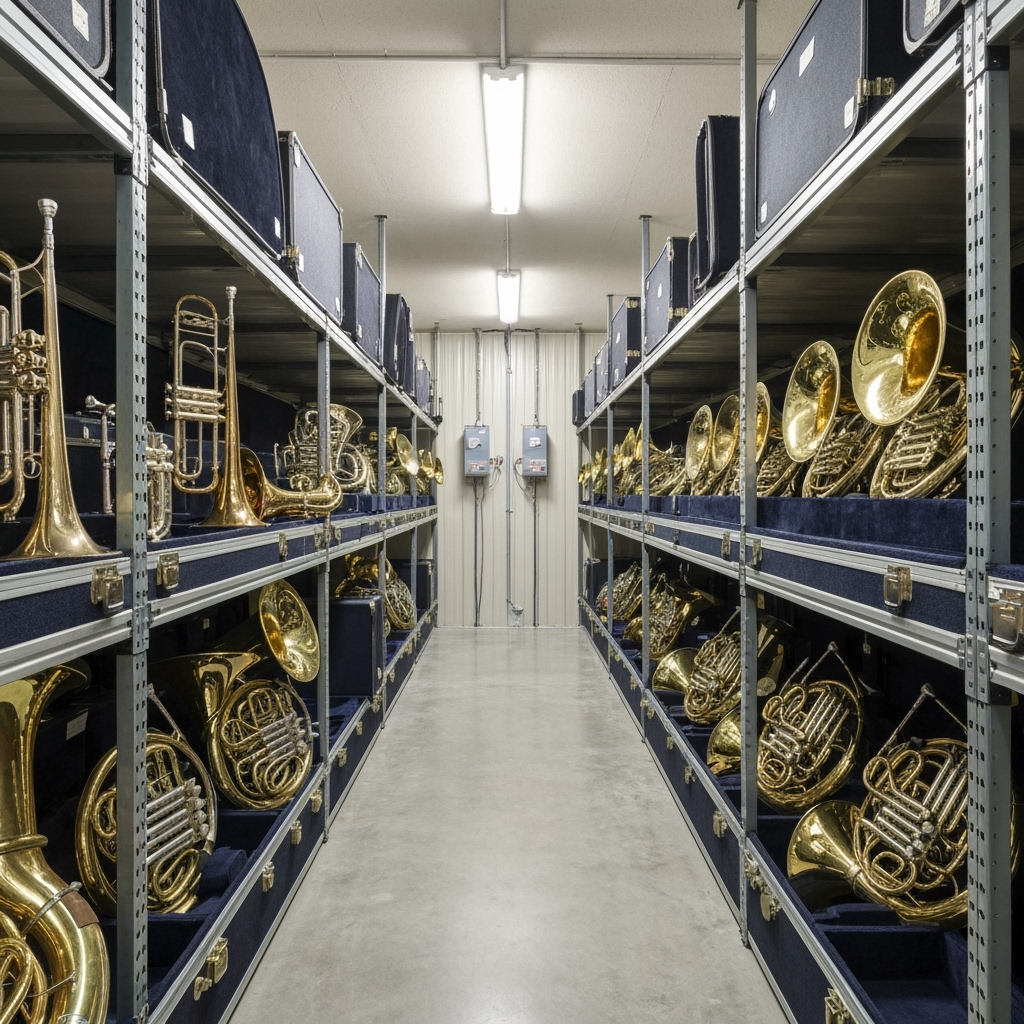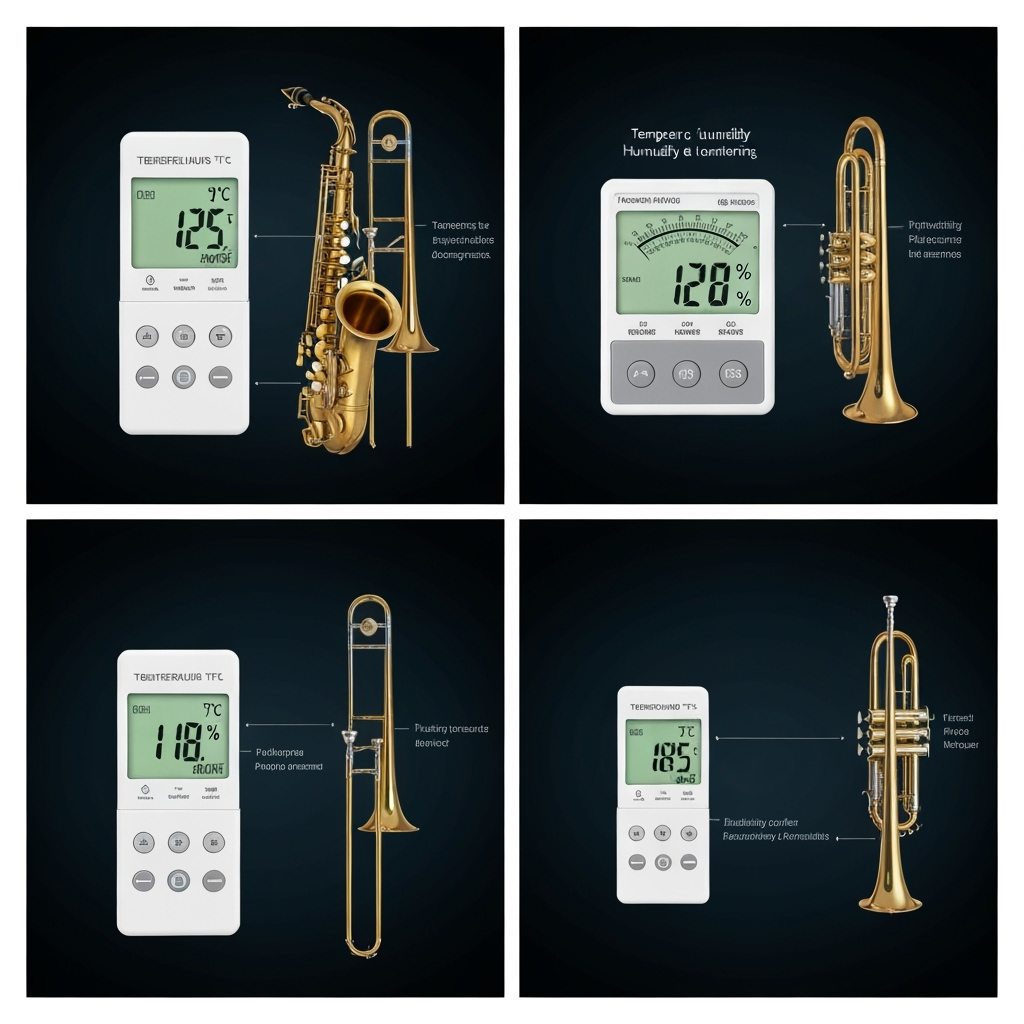Understanding the Importance of Climate Control for Brass Instruments
Brass instruments represent a significant investment, both financially and emotionally. Whether you’re a professional musician, educator, or collector, proper storage is crucial for maintaining your instruments’ sound quality, appearance, and longevity. Climate-controlled storage offers the perfect solution for protecting these valuable pieces from environmental damage.

The Impact of Temperature and Humidity on Brass Instruments
Brass instruments are particularly sensitive to environmental conditions. Fluctuations in temperature and humidity can cause:
- Metal expansion and contraction leading to loose joints
- Corrosion and tarnishing
- Deterioration of pads and cork components
- Stuck valves and slides
- Compromised sound quality
Optimal Storage Conditions for Brass Instruments
Climate-controlled storage units maintain consistent conditions that help preserve your instruments:
- Temperature: Maintain between 65-75°F (18-24°C)
- Relative Humidity: Keep between 45-55%
- Air Quality: Filtered air to prevent dust accumulation

Preparing Your Instruments for Storage
Before placing your brass instruments in storage, follow these essential steps:
- Clean and dry thoroughly
- Oil all moving parts
- Empty water keys and slides
- Use proper cases with protective padding
- Consider using silica gel packets for additional moisture control
Storage Unit Organization Tips
Maximize your climate-controlled storage space with these organization strategies:
- Use sturdy shelving units to keep cases off the floor
- Store larger instruments (tubas, sousaphones) at ground level
- Keep frequently accessed instruments near the front
- Label cases clearly for easy identification
- Leave space between items for proper air circulation
Regular Maintenance Schedule
Even in climate-controlled storage, regular maintenance is important:
- Monthly visual inspections
- Quarterly cleaning and oiling
- Semi-annual professional check-ups
- Regular monitoring of temperature and humidity levels
Protecting Your Investment Long-Term
Consider these additional protective measures:
- Insurance coverage for stored instruments
- Documentation of instrument condition before storage
- Regular testing of climate control systems
- Emergency contact information readily available
When to Choose Climate-Controlled Storage
Climate-controlled storage is especially important in these situations:
- Long-term instrument storage (over 3 months)
- Seasonal storage for school bands
- Professional musician inventory management
- Vintage or antique instrument collection protection
- Storage in areas with extreme weather conditions
Making the Most of Your Storage Investment
To ensure you’re getting the most value from your climate-controlled storage:
- Choose the right size unit for your collection
- Consider sharing costs with other musicians
- Monitor usage patterns to optimize space
- Keep detailed inventory records
- Plan for future collection growth
The Bottom Line
Investing in climate-controlled storage for your brass instruments is an essential step in protecting their value and ensuring their longevity. With proper preparation and maintenance, your instruments will remain in optimal condition, ready to produce beautiful music whenever you need them.










Leave a Reply